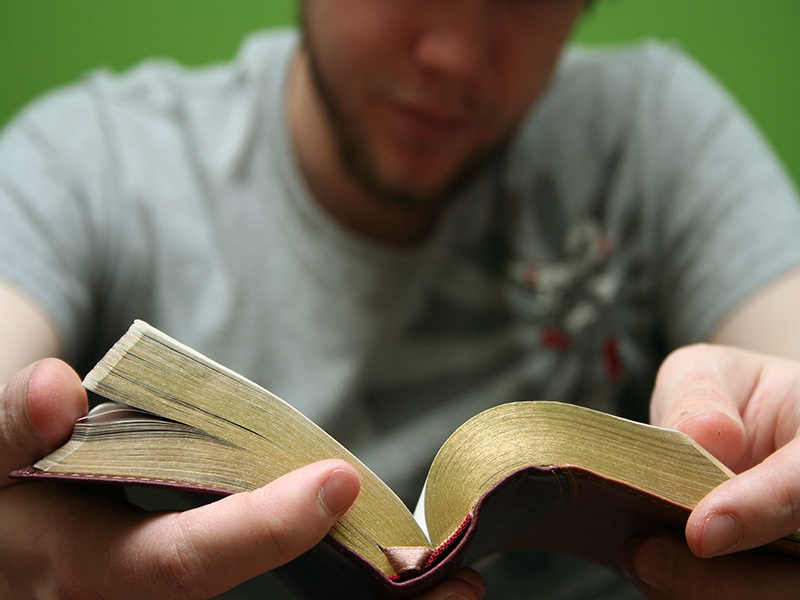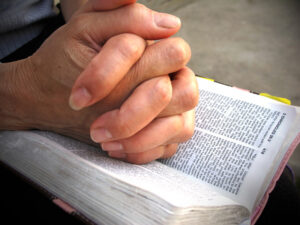Dear readers, today we will go into one of the most enlightening chapters of the Torah, known in Hebrew as “Parashat Shavua ChuKkat,” by providing you with a different viewpoint on the amazing and well known passages from the Old Testament (Moses and his sin in the dessert, and the red heifer sacrifice). We will begin to explore the Word of God in a richer and more explained manner, which will help you study the Bible in a deeper way.
If You Are Given Life And Death Choice: Choose Life
“See, I have set before you today life and good, death and evil”
– Deuteronomy 30:15
ChukKat (“the decree of”) is the first portion that starts the actual movement of the people towards the Land. And what is the first thing that God addresses as the people of Israel prepare to enter the Land after forty years in the wilderness?
He speaks about the law of the red heifer, which is unquestionably, one of the least understood sacrificial laws in the Old Testament.
This law was given to the children of Israel for the purpose of cleansing people who had come into contact with a corpse, the most extreme type of ritual impurity, and so had become unclean.
As a result, the goal of this commandment was to cleanse the filth of death that lay between God and man. Surprisingly, this is the first commandment that God gives His people as they begin their journey to the Land!
This commandment reflects the same stark distinction between life and death that we see in Deuteronomy’s famous words: “See, I have set before you today life and good, death and evil.”
In the New Testament, the red heifer appears only once, in Hebrews 9:13-14. The law of the red heifer is viewed as a figure and shadow of the atonement of Jesus Christ, just like other OT sacrifices. The writer of Hebrews makes it clear that, if the ashes of the red heifer purified the children of Israel from the defilement of dead bodies, “how much more” the blood of Christ will purify his disciples from the “dead works”.
However, there is an additional and fascinating aspect of this law: it concerns “the irony of this sacrifice, since those who were once impure are made pure, while those who were pure to begin with (the priest and the attendants) become impure by participating in the ritual.”
Aka the priest becomes unclean in order for the people to be purified;
He takes upon himself the ritual impurities of man and thereby becomes unclean himself:
“the priest shall remain unclean until evening.”
– Leviticus 22:6
This sacrificial switch has often been overlooked by Christian commentators, but not by Jewish scholars. For example, here is the comment written by the Lubavitch Rebbe:
“The fact that the ashes of the heifer ‘purify the contaminated and contaminate the pure,’ carries an important lesson to us in our daily lives: If your fellow has been infected by impurity and corruption, do not hesitate to get involved and do everything within your power to rehabilitate him. If you are concerned that you may become tainted by your contact with him, remember that the Torah commands the kohen to purify his fellow Jew, even though his own level of purity will be diminished in the process.”
The Sin: ’Because You Did Not Believe In Me’
The fact that God forbade Moses from entering the Promised Land as a result of his wrongdoing is another major puzzle in this section.
All of the action takes place in the wilderness, and we learn that after spending years traveling through the desert, the Israelites finally arrived in Kadesh, n the wilderness of Zin, when Miriam passed away. Immediately after her death, “there was no water for the community.”
Before we continue reading about God’s judgment, where there is no single opinion among the scholars as to what exactly sin of Moses was, we need to ask ourselves: Why the congregation didn’t have access to water after Miriam’s death? Does Miriam have anything to do with water?
From this juxtaposition of Miriam’s death and the lack of water, the Jewish sages concluded that, during all the previous years, the Israelites did have a source of water – it was the so-called ’well of Miriam’.
According to Midrashim, the “well” was actually a rock that followed the Israelites during their entire journey.
It was from this rock that Moses first brought forth water when the people complained about their lack of water (in Exodus), and it is the same rock that, after Miriam died, Moses hit in order to draw forth water once again (that is mentioned in Numbers).
Even Paul said in First Corinthians: For they drank from the spiritual rock that followed them, and the rock was Christ. . It is clear that Paul understood the rock in a spiritual, rather than a physical sense; however, we have to understand that when Paul speaks about a traveling rock, he is drawing on rich traditional interpretation.
As we continue our reading, we see how the people of Israel complain to Moses and Aaron: “Why have you brought up the assembly of the Lord into this wilderness, that we and our animals should die here?”
Then God says to Moses: “Take the rod; you and your brother Aaron gather the congregation together. Speak to the rock before their eyes, and it will yield its water; thus you shall bring water for them out of the rock, and give drink to the congregation and their animals.”
Moses and Aaron gather the congregation, and Moses starts by rebuking the people: “Hear now, you rebels! Shall we get you water out of this rock?” Then Moses “lifted his hand and struck the rock twice with his rod; and water came out abundantly, and the congregation and their animals drank”.
It seems like a happy ending only to find that this is another unpleasant story.
We hear God saying to Moses and Aaron: “Because you did not believe Me, to hallow Me in the eyes of the children of Israel, therefore you shall not bring this assembly into the land which I have given them.”
– Numbers 20:12
So, what was Moses’ sin, as we questioned before? Where is the answer?
The Jewish commentaries offer different explanations as to what Moses’ (and Aaron’s) sin was. The most traditional one is based on Rashi’s opinion: where he points out that Moses expressed a lack of faith by striking the rock instead of just speaking to it, as God had instructed. And according to another commentator – Maimonides, Moses’ sin was the fact that he got angry and said to the people, “Hear now, you rebels.”
But the medieval Jewish scholar, Nachmanides, who disagrees with both explanations, comments that God explicitly says that Moses’ sin was a lack of faith—not disobedience, as in Rashi’s explanation, or anger, as in Maimonides’ interpretation.
Nachmanides therefore, explains that the sin was in Moses’ words, “Shall we get your water out of this rock?” Moses says “we” while the miracle should be attributed solely to God – and God’s punishment is a very sober and stern warning to those confusing pronouns, saying “we” instead of giving the glory to God !




